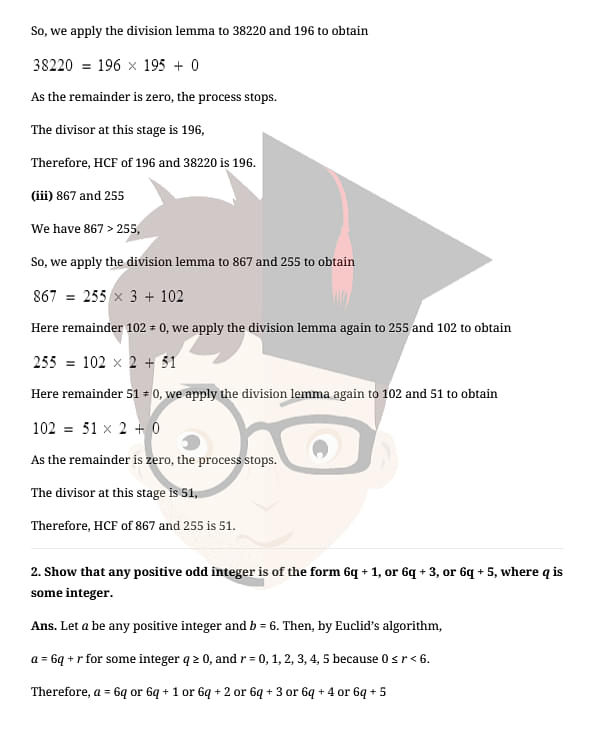Jasmine Grover Content Strategy Manager
Content Strategy Manager
NCERT Solutions for Class 10 Maths Chapter 1 Real Numbers Exercise 1.1 is covered in this article with a step by step explanation. Chapter 1 Real Numbers Exercise 1.1 covers basic concepts of divisibility of integers using Euclid’s division algorithm. Euclid’s division algorithm says that any positive integer a can be divided by another positive integer b in a way that the remainder will be smaller than b.
Download PDF: NCERT Solutions for Class 10 Maths Chapter 1 Exercise 1.1
Check out the solutions of Class 10 Maths NCERT solutions chapter 1 Real Numbers Exercise 1.1:





Read More: NCERT Solutions For Class 10 Maths Real Numbers
Check out other exercise solutions of Class 10 Maths Chapter 1 Real Numbers
Also Read:
| Class 10 Chapter 1 Real Numbers Topics | ||
|---|---|---|
| Root 2 is an irrational number | Real Numbers Formula | Real Numbers Important Questions |
| What are Real Numbers? | Fundamental Theorem of Arithmetic | MCQs for Real Numbers |
Also Read:
| CBSE Class 10 Mathematics Study Guides | ||
|---|---|---|
| NCERT Solutions for Class 10 Maths | Math Formula | Difference between in Maths |
| Math MCQs | Math Study Notes | Calculus |
| Mensuration | Arithmetic | Trigonometry |




Comments